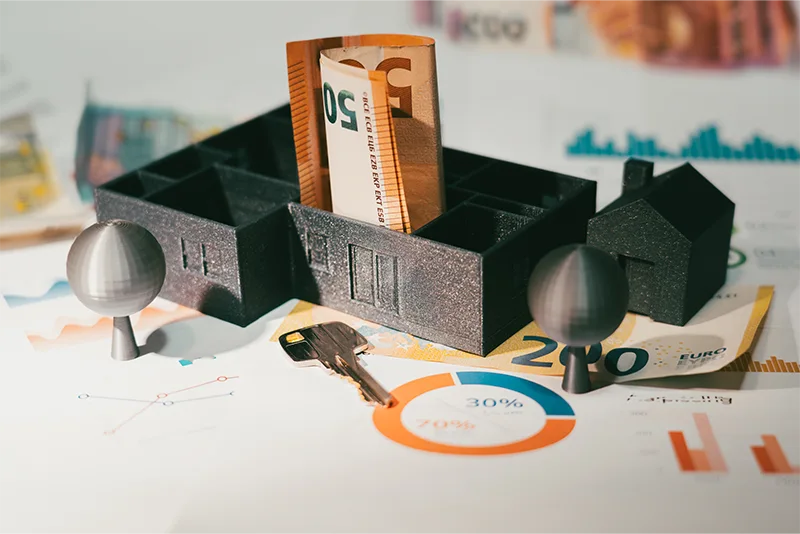Asset fractionalization is a transformative feature of real-world asset (RWA) tokenization that makes high-value assets more accessible and liquid for a broader range of investors. This process involves dividing ownership of a single asset into smaller, digital units, or tokens, which investors can purchase individually. By enabling fractional ownership, tokenization opens up new investment opportunities, allowing individuals to participate in asset classes that would otherwise be beyond their reach. Let’s explore how asset fractionalization works within RWA tokenization, its benefits, and its implications for investors and asset owners.
How Asset Fractionalization Works in RWA Tokenization
RWA tokenization involves converting a physical or financial asset into digital tokens recorded on a blockchain. Through fractionalization, each token represents a portion of the underlying asset. For instance, a piece of real estate valued at $1 million could be tokenized and divided into 1,000 tokens, with each token representing 0.1% ownership. Investors can then purchase as many tokens as they desire, allowing them to own a fraction of the asset without purchasing it in full.
Blockchain technology is fundamental to this process, as it enables secure and transparent ownership tracking. Each token is registered on a decentralized ledger, which provides verifiable proof of ownership and an immutable transaction history. Smart contracts, a type of programmable blockchain code, automate compliance, distribution of income (such as rent for a real estate property), and other asset management processes, making fractionalization seamless and efficient.
Benefits of Asset Fractionalization in Tokenization
1. Accessibility for a Broader Range of Investors
Traditional investments in assets like real estate, fine art, or rare collectibles often require significant capital, making them accessible primarily to wealthy or institutional investors. Fractionalization allows for the division of high-value assets into smaller, affordable portions. Retail investors can buy into these assets with smaller amounts of capital, gaining access to investments that were previously exclusive.
2. Increased Liquidity
Illiquidity is a common challenge for high-value assets such as real estate and fine art, as finding buyers or sellers for whole assets can be difficult. Fractionalization improves liquidity by allowing investors to buy or sell smaller shares of an asset, making transactions more manageable. Some tokenized assets are also traded on decentralized exchanges or specialized
token marketplaces, further enhancing liquidity and making it easier for investors to enter or exit positions.
3. Portfolio Diversification
Fractional ownership enables investors to diversify their portfolios by allocating smaller amounts across different asset types, industries, and geographic locations. For example, instead of investing $100,000 into a single piece of real estate, an investor can use that amount to purchase fractional shares in multiple properties, art pieces, or even rare wine collections. This diversification can help mitigate risk by spreading investments across a variety of assets.
4. Ownership Flexibility
Fractionalization provides flexibility to investors who want exposure to high-value assets without taking on full ownership responsibilities. Since tokens represent ownership rights, investors can choose to buy, sell, or hold their fractions based on personal financial goals, liquidity needs, and market conditions. This flexibility is particularly beneficial in volatile or niche asset markets, where whole ownership may not be practical or feasible.
5. Passive Income Opportunities
Fractionalized tokens can provide passive income to holders, depending on the asset type. For instance, a tokenized real estate property may generate rental income, distributed proportionally to token holders through smart contracts. Similarly, a fractionalized loan or debt instrument can yield interest payments. Passive income opportunities appeal to investors seeking steady returns without direct involvement in asset management.
Real-World Applications of Asset Fractionalization
1. Real Estate
Tokenized real estate is one of the most prominent applications of fractional ownership. Properties such as residential apartments, commercial buildings, or luxury resorts can be divided into tokens and offered to investors. This approach allows individuals to invest in high-value properties with smaller capital, while property owners gain liquidity without needing to sell the entire asset.
2. Art and Collectibles
Tokenization makes high-value art and collectibles—like paintings, sculptures, rare coins, and even sports memorabilia-accessible to a wider audience. By fractionalizing a single work of art or collectible, multiple investors can gain exposure to this niche market. Fractional ownership democratizes access to art investments, often regarded as stable or appreciating assets, and provides artists or owners with an alternative revenue stream.
3. Private Equity and Venture Capital
Traditional private equity and venture capital investments are typically illiquid and have high minimum investment requirements. Tokenization can fractionalize these investments, allowing
smaller investors to access private markets that were once reserved for large, institutional investors. This enables broader participation in promising startups and growth companies while providing entrepreneurs with diversified funding sources.
4. Commodities
High-value commodities like gold, silver, oil, or even farmland can be tokenized and fractionalized, allowing investors to buy portions of these resources without having to manage or store them. Tokenized commodities make it possible for retail investors to add stable assets to their portfolios, offering inflation protection and potential appreciation without the logistical complexities of handling physical commodities.
5. Debt and Income-Producing Assets
Fractionalization applies to income-producing assets such as loans or rental properties, where token holders can receive proportional income distributions. This approach is commonly used in peer-to-peer lending and decentralized finance (DeFi) projects, where investors can fund loans and receive interest payments through fractionalized debt tokens.
Risks and Considerations of Fractional Ownership
1. Market Liquidity
While fractionalization generally improves liquidity, certain tokenized assets may still face limited liquidity due to a lack of secondary market demand or investor interest. Investors should evaluate the market’s liquidity for specific tokenized assets to ensure they can easily buy or sell their shares when needed.
2. Regulatory Compliance
Fractional ownership involves regulatory considerations, especially as tokenization enters traditional financial and real estate markets. Compliance with securities laws, tax regulations, and local property laws varies by jurisdiction. Tokenized asset platforms must ensure regulatory compliance to protect investors and prevent legal issues.
3. Smart Contract Security
Since fractionalized ownership relies on smart contracts to automate transactions and enforce ownership rights, vulnerabilities in smart contract code could expose investors to risk. Smart contract audits and rigorous security practices are essential to minimize risks associated with smart contract failures or cyber-attacks.
4. Valuation Challenges
Tokenized and fractionalized assets, particularly non-financial assets like art or collectibles, may face valuation challenges. The fair market value of such assets can be subjective, making it essential for investors to understand the valuation methods and market demand for these assets.
Asset fractionalization in RWA tokenization is redefining the investment landscape by making high-value assets more accessible, liquid, and flexible. By leveraging blockchain technology, fractional ownership empowers retail investors to diversify their portfolios and participate in markets that were once exclusive to wealthy individuals and institutions. For asset owners, fractionalization opens up new liquidity pathways and enhances market reach.
Although fractional ownership presents exciting opportunities, investors should consider the risks, including market liquidity, regulatory compliance, and security. With the continued evolution of blockchain and tokenization, fractional ownership is likely to play an essential role in democratizing access to assets and expanding the possibilities for global investment and asset management.



